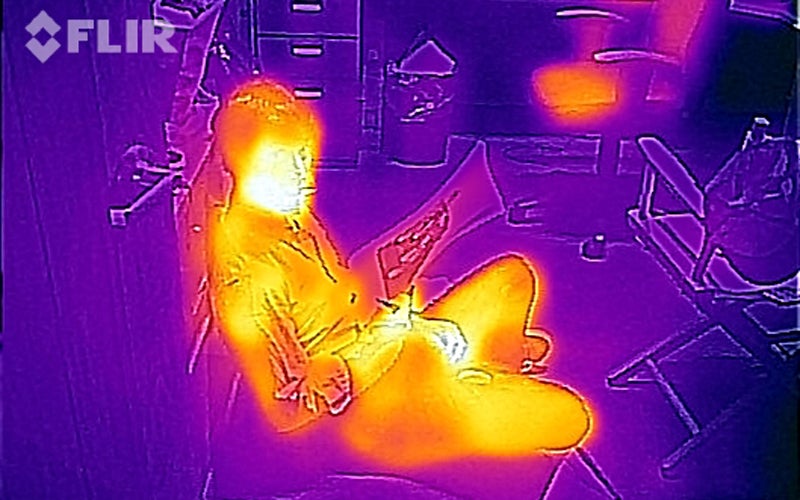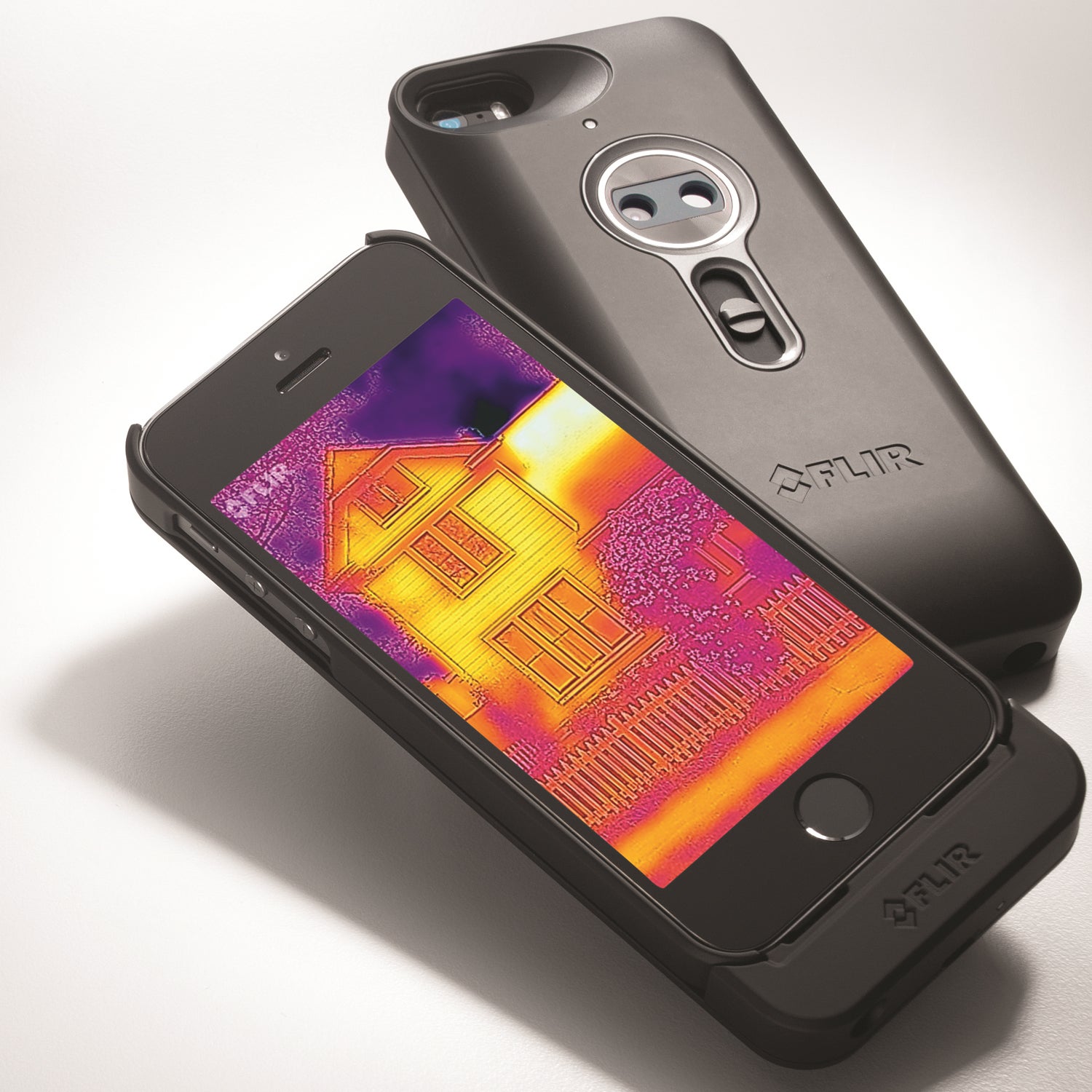If you’re a fan of cop shows or military dramas, you’ve no doubt seen ghostlike pictures of bright white bad guys in the night that are produced by forward looking infrared radar (FLIR) cameras.

The biggest company in the FLIR game is , which, until this year, made products exclusively for professional, military, and homeland security applications. But now comes the consumer model Flir One that snaps onto your iPhone and uses two dime-sized cameras to create a stereo image of both the visible world and its heat signature.
Unlike night vision goggles, which shoot out a beam of invisible infrared light to illuminate the scene in front of the camera, a Flir camera effectively sees the signatures created by heat sources like warm bodies and car exhausts. “With Flir One, we’re creating a category,” says Bruce Cumming, the company’s marketing director. “Our goal is to make it as ubiquitous as GPS is today.”

The camera has a ways to go before it’s widely adopted, but you can see the possibilities. The most useful application probably has to do with energy efficiency. The review unit that the company sent was great for locating drafty windows and ghost-power sources based on the heat generated at the outlet and in the power converters. And a spot-meter function allows you to take reasonably accurate temperature readings on remote objects—for example, if you want to see if a ceiling-mounted air-conditioning duct is actually pumping out cold air.
Once you get beyond home efficiency, though, its uses seem a bit less concrete. As far as seeing bad guys or animals in the night, the camera has a limited range. The farthest I was able to see my dog in the dead of night—he showed up as a tiny red blip—was 62 yards. That’s not quite far enough to be able to scan a dark forest for a lost hiker or a downed big game animal, but it’s far enough to see somebody lurking in the bushes if you’re the hyper-aware type who’s apt to be scanning bushes with an infrared camera.
The Flir One’s only technical shortcoming is that you can’t charge your phone while it’s connected. Future models will no doubt figure out how to charge the camera battery and the phone battery simultaneously.
$349,������


